The glories of our blood and state Are shadows, not substantial things; There is no armour against fate; Death lays his icy hand on kings. Lines from Death, the Leveller by James Shirley, said to have chilled the heart of Oliver Cromwell
A chronology of the life of Oliver Cromwell from his birth in 1599 to his death in 1658 is contained in the collection. Into this context Michael O’Donohoe wove the execution of Charles I on 30 January 1649.
Sir William Wilde wrote that Cromwell’s campaign was one of the most defective portions of modern Irish history. A proposal to write Cromwell’s campaign in Kerry was made in 1846 by Tralee historian and antiquarian, John T O’Flaherty (1770-1851).
Smith’s History, he wrote, did not ‘enter much into Cromwell’s wars in Kerry, nor into the atrocities of Governor Nelson and his regicide commanders’:
In that ferocious service, which had even put in requisition, as its reserve, the thorough-bred bloodhound, a British officer happened to be engaged who conferred honour on the British name and on his own memory, Captain Blennerhassett.
‘This benevolent and high-minded individual had rescued the lives of hundreds of innocent persons from torture and death’, wrote O’Flaherty, ‘when O’Sullivan More of Dunkerron Castle had been betrayed, handed over to Nelson, and summarily put to death, Blennerhassett, on receiving the intelligence, exclaimed with tears, Alas for that brave and generous Irishman, who had always given quarter to my men.’1
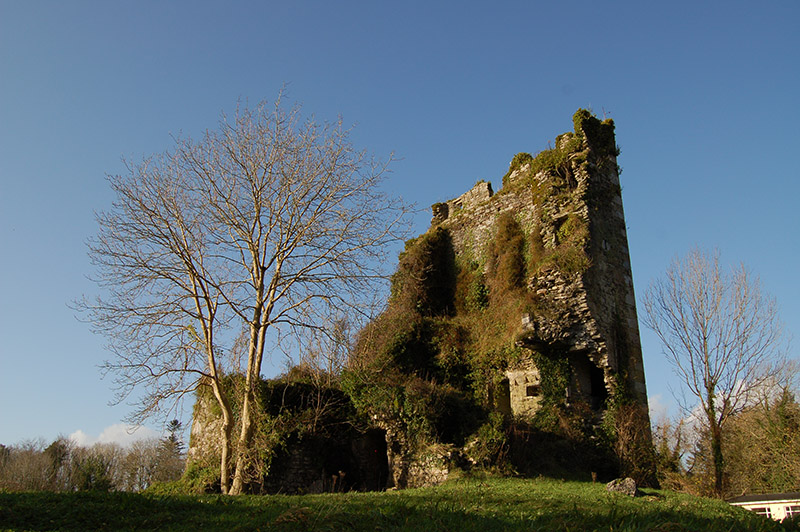
At the period O’Flaherty was writing, 1846, Cromwell was spoken of ‘in the living phraseology … not as if he were a shadow in the distance of two centuries but as if he were an agent of recent days’:
Stop as you pass a labourer on the roadside in Ireland. Ask him to tell you of the ruin before you on the hill, you will hear him describe it … There’s the hill where the wagabone planted his cannon … there’s the brache which he made in the walls …2
Along the coastal areas of the county today, Cromwell’s campaign is seen still in the ruined castles that once valiantly hemmed the shores. Other castles totally destroyed, such as Castledrum and Castlegregory, have but a mark on the nineteenth century maps to remind of their existence.
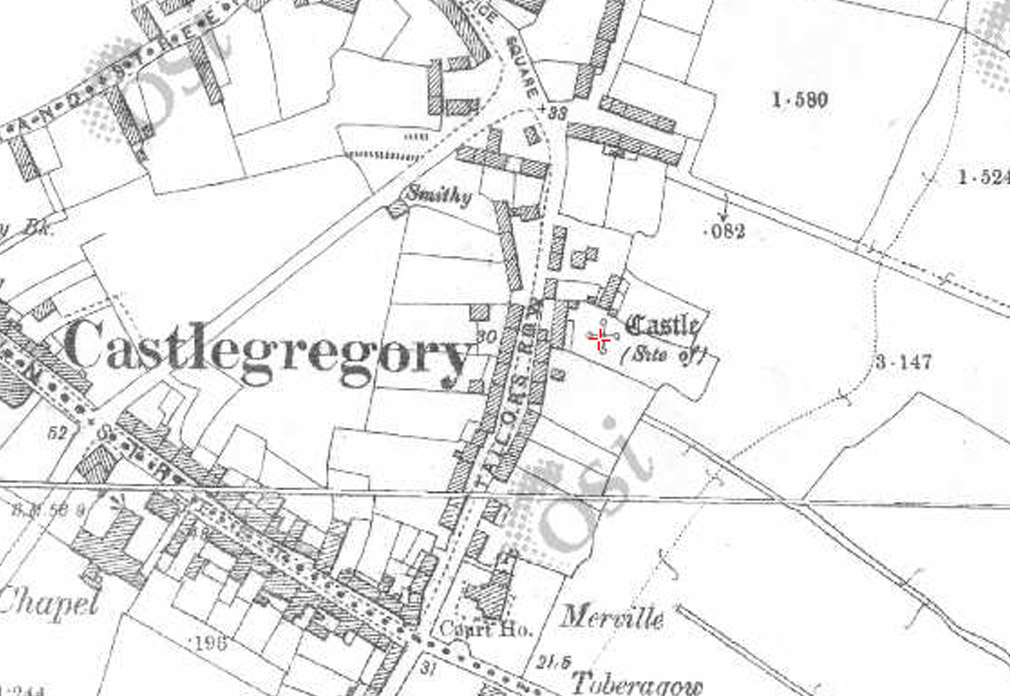
A mid nineteenth century study reckoned Kerry once had as many as 90 castles, each having its share in the history of the county.3
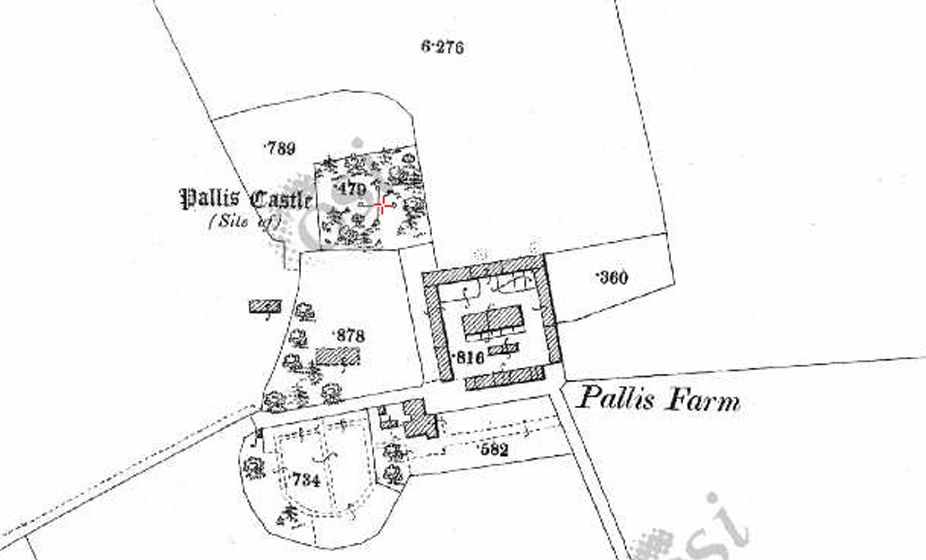
For many of the castles, their history is obscure. In 1841, John O’Donovan described the condition of the ruined Ballymacadam Castle, but nothing of its fall.
A square castle measuring on the inside 15ft 9in from east to west and 13ft 2in from north to south with a spiral staircase which led to the top at the south east angle (entirely destroyed). The second and fourth floors rested on stone arches, the walls 4ft 9in thick. Its east side was down to the very foundations as was also the greater part of the north wall. All the windows were disfigured except one narrow rectangular one on the south wall which lighted the first floor and one on the west wall which lighted the fourth.
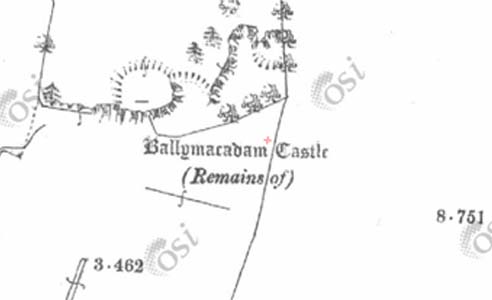
Minard Castle near Dingle might be regarded as a monument to Walter Hussey of Castlegregory who Kerry historian Mary Agnes Hickson claimed was ‘the last gentleman in Kerry who held out against Cromwell’. His body was recognised among the dead by a distinctive red stocking.4
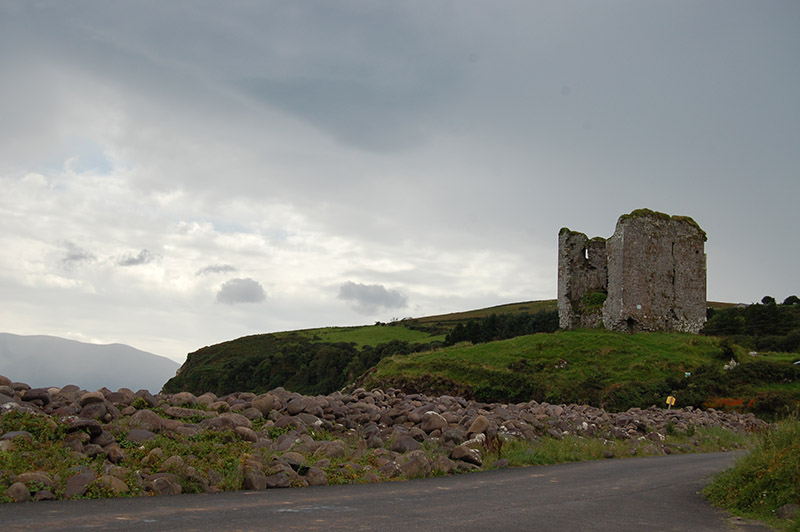
Rahinnane Castle, a spectacular ruin also in Dingle, is a subject for today’s creative photographer.
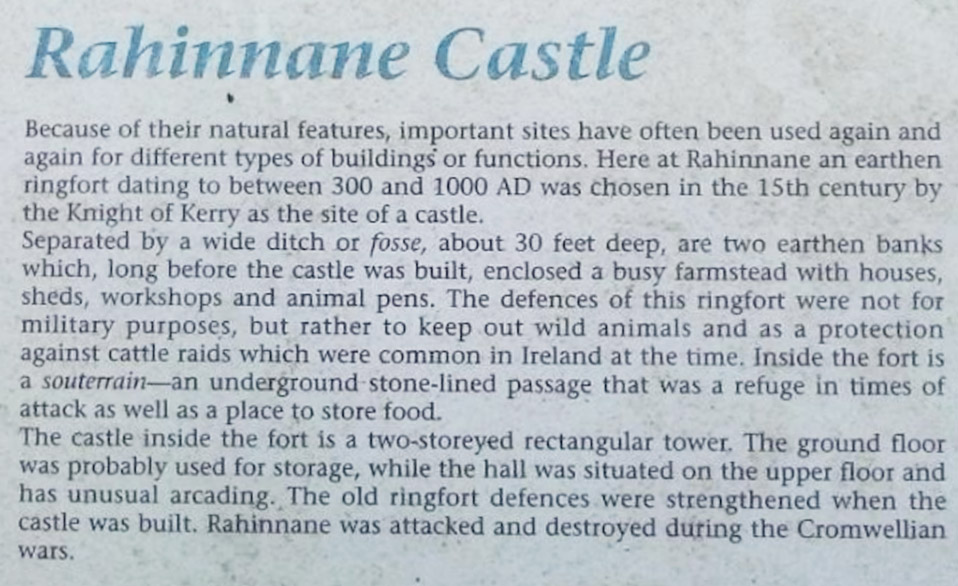
Jeremiah King’s History contains fragments of Cromwellian history, each opening volumes on ancient Ireland. His research reveals that the MacCarthy clan of Palace (Caislean ua Cartha), subject of one of Egan O’Rahilly’s poems, built four castles on Lough Lein and the river Laune to stop all the passages of Desmond.
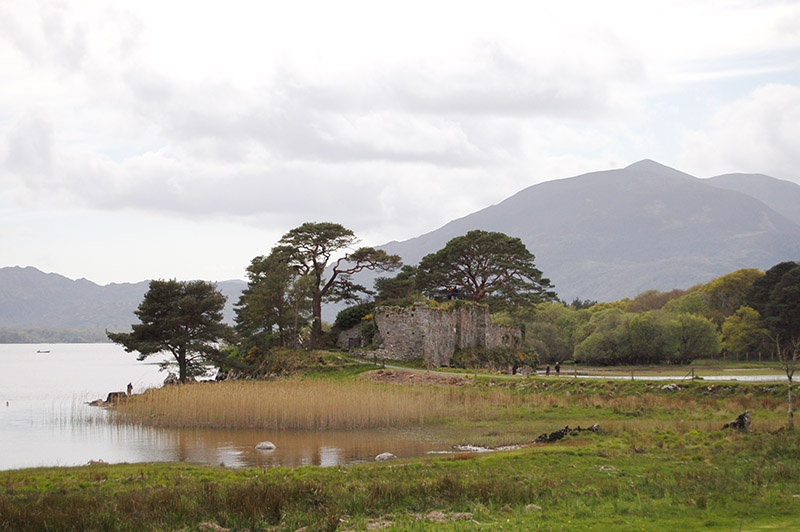
King also tells us that Daniel O’Sullivan More raised a regiment for King Charles of ‘110 young and beardless men … all of the O’Sullivan family of Cappanacuss and such of them as were not lost in said regiment went abroad’.5
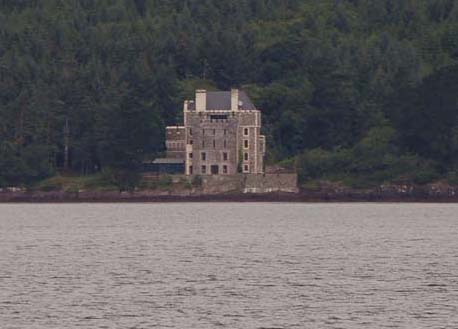
King further records how Ardtully Castle was dismantled in Cromwell’s war, once the residence of Mac Tynoen MacCarthy.
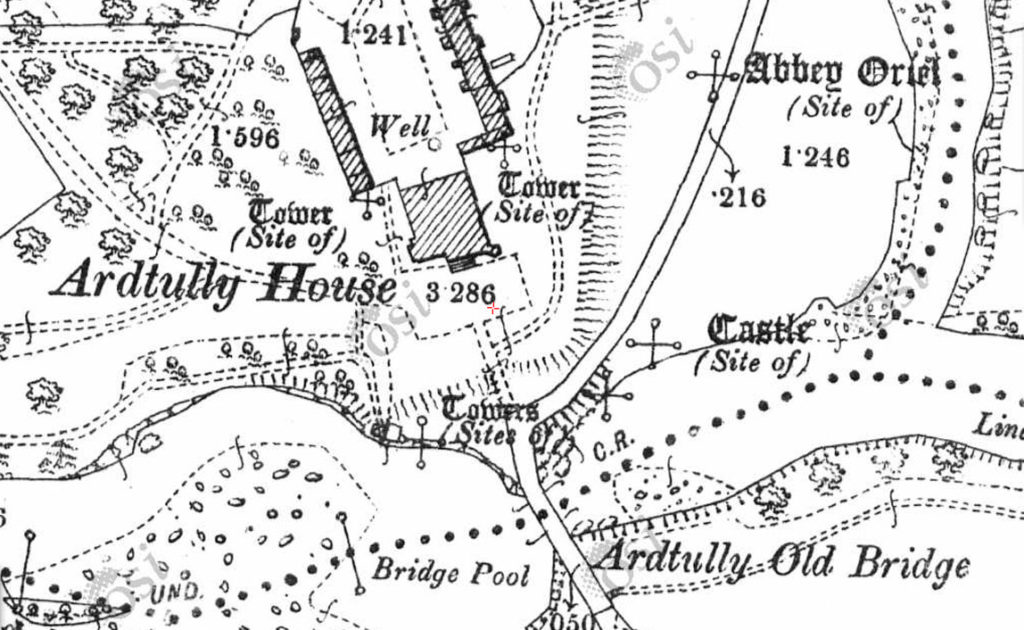
King further informs that Brown’s Castle, forfeited in Cromwellian times, was probably erected in the thirteenth century when Sir Reginald Brown was High Sheriff of Kerry and Limerick, and Sir Gilbert Brown and Maurice Cantillon were guardians of the ‘town of Traly and of the peace of Kerry’.5a
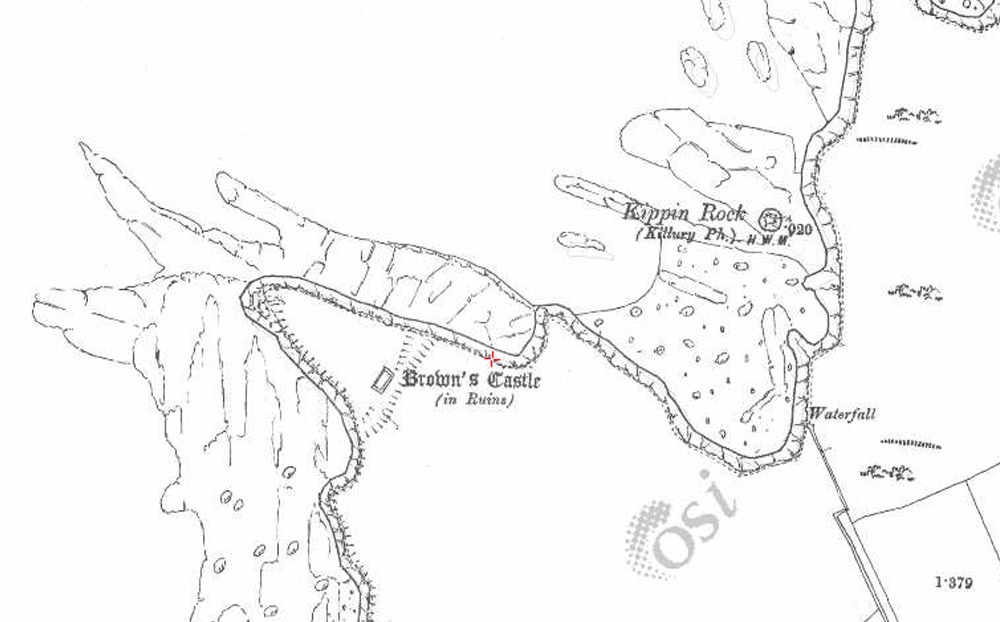
A pilgrimage to Scariff Island a few miles outside Derrynane Abbey honours the memory Fr Francis O’Sullivan of Tuosist who was beheaded on the island, ‘an execution, symbolic of Calvary … which left Kerry for years without a Bishop’.6
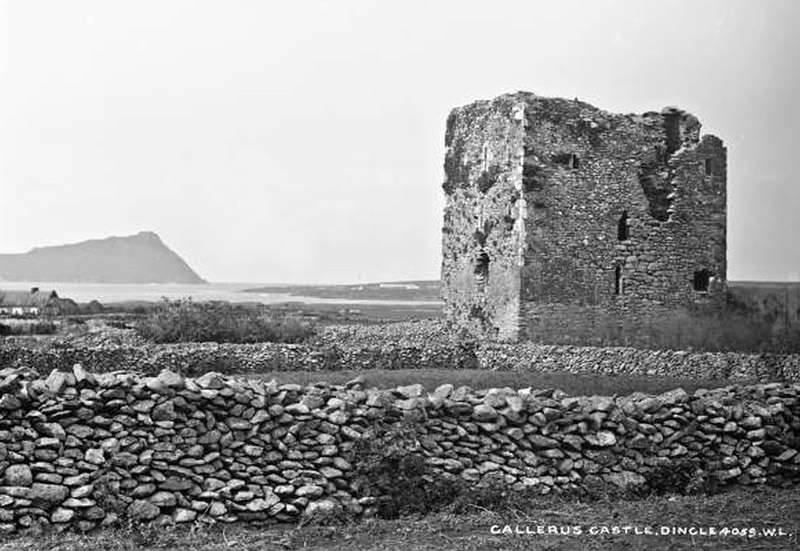
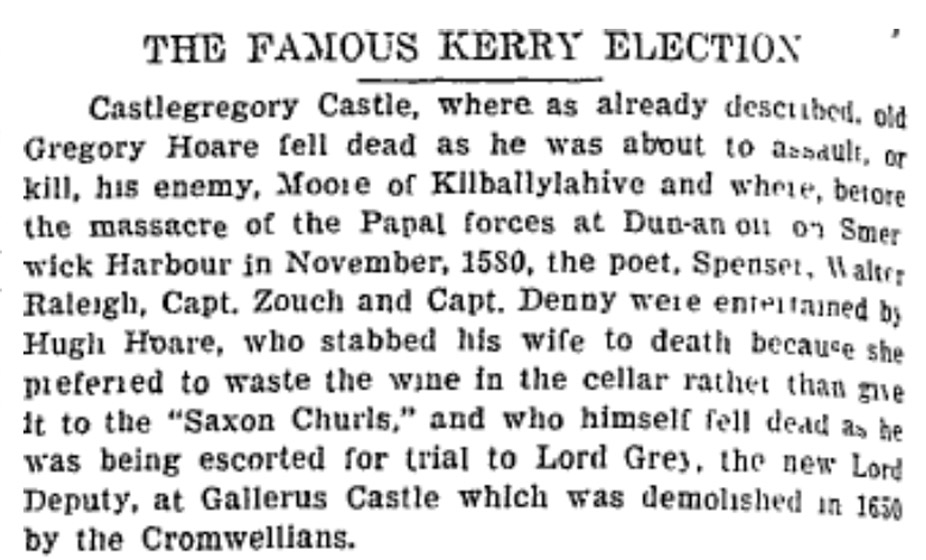
Morgan O’Connell defended Ballycarberry Castle against Cromwell’s forces but it was taken and the occupiers banished to county Clare. Afterwards one of the McCarthys took his residence in the western wing of the castle ‘where he dwelt for some time after which he repaired to and resided in Begnish Island’.7
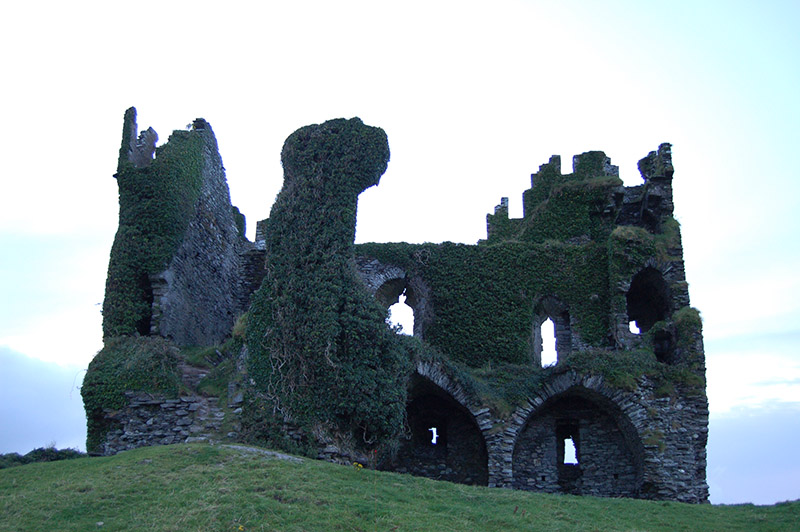
In 1649, the third siege of Carrigafoyle put the castle in a state of defence and ‘for the first time it was defended by an O’Connor Kerry in person’. After ‘a protracted and desperate resistance’ the castle was taken.8
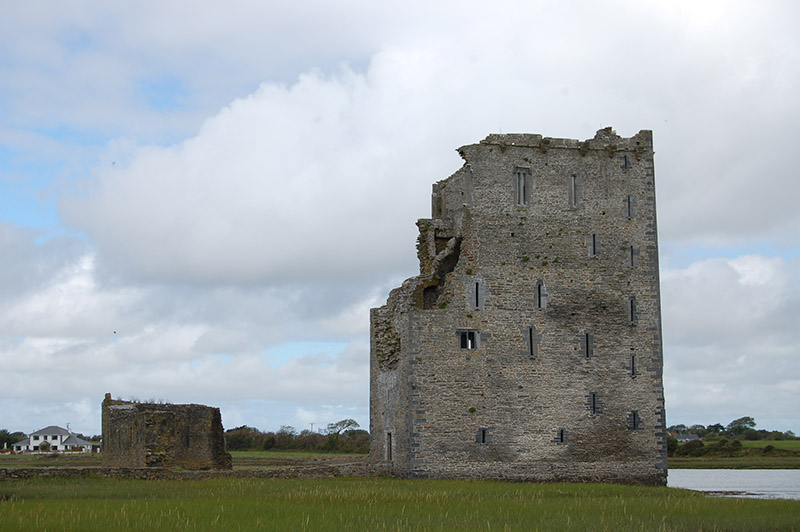
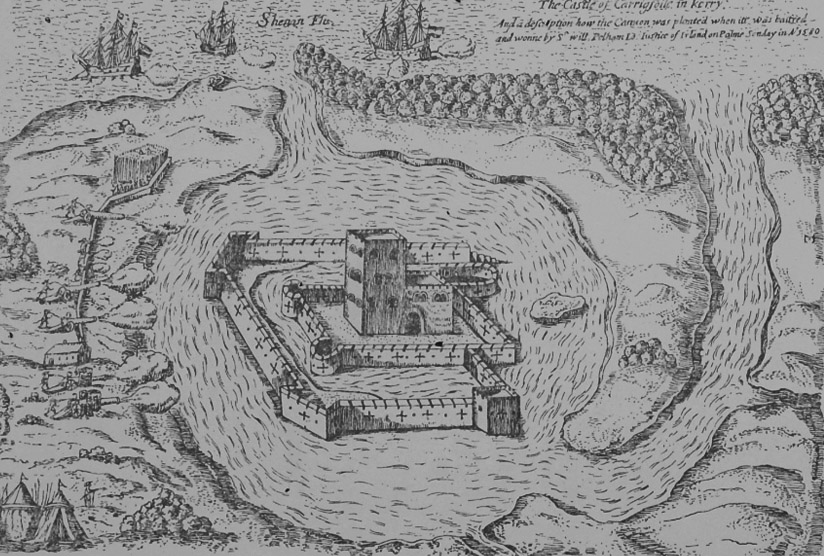
Ferriter’s Castle (Castle Sybil) and a twentieth century monument serve the memory of Piaras Ferriter, who led the men of West Kerry against the forces of Cromwell at Tralee.9
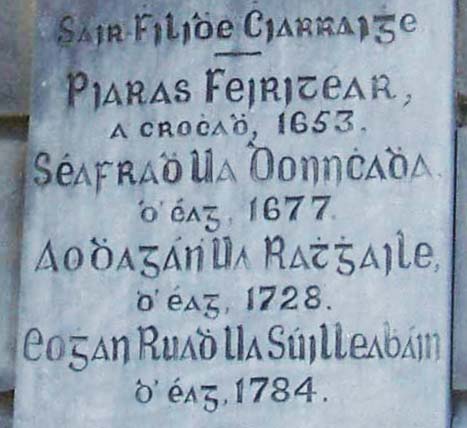
Ferriter, of whom it was written, ‘The wars of Cromwell did not cease in Kerry until Ferriter’s wife was drowned at the most western headland of Coraguiney’, was captured and taken prisoner:
Brigadier Nelson (who replaced Ludlow) tried to get Ferriter of Dingle and O’Connor of Carrigafoyle to attend a conference at Ross … both were offered freedom if they became Protestants but this they refused to do.
O’Connor and Ferriter were joined by Dr Egan, Bishop of Kerry and Rev Thaddeus Moriarty, Prior of the Dominican Convent, Tralee. The four were hanged at Cnocan na gCaorach in Killarney.10
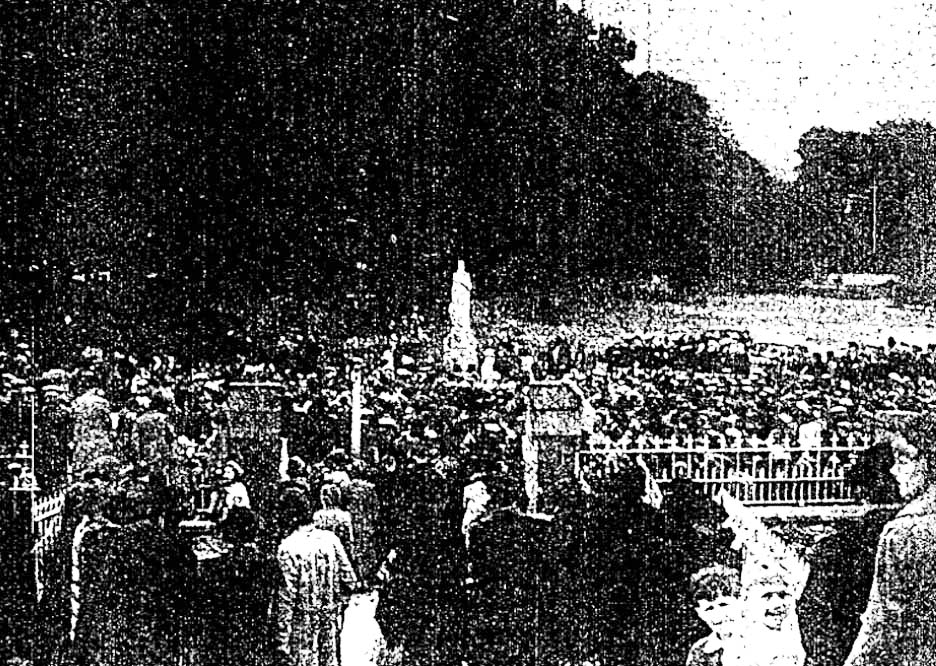
A monument unveiled on 15 August 1940 near their place of execution commemorated four Kerry poets of whom one was Ferriter, ‘hanged between a bishop and a priest’:
It will carry the reflecting mind back some 280 years to the period when the country lay bleeding under the heel of Cromwell and the Cromwellian settlers usurped the lands of the native owners, whom they transplanted or turned adrift, the period when Ferriter paid the supreme penalty for loyalty to his country and his country’s faith.11
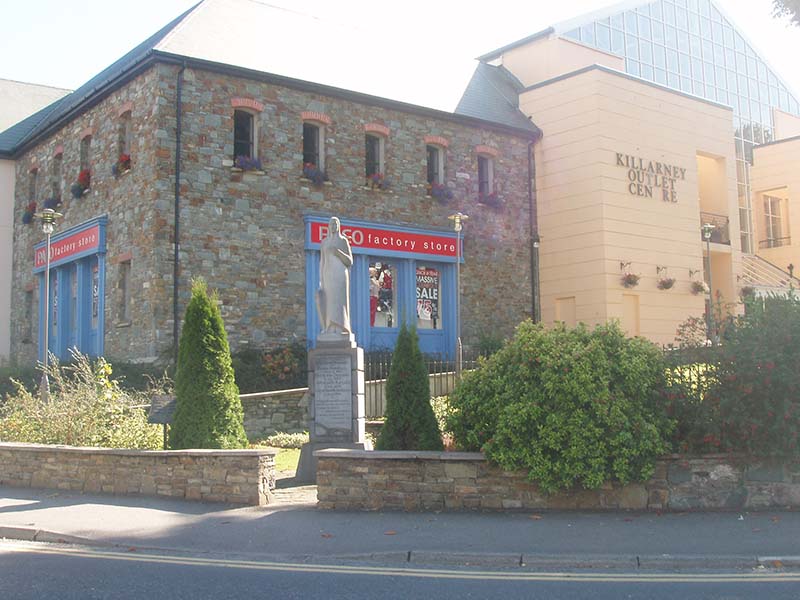
Poems of Geoffrey O’Donoghue (one of the four commemorated poets) contains a selection of rousing and desperate war poems from 1641-53:
Wage battle with an army of your immaculate blood, brave tower of Mangerton, who dreads no poets, summon the race of Cairbre Músg without delay, temperate men in no temper to bow to the state.12
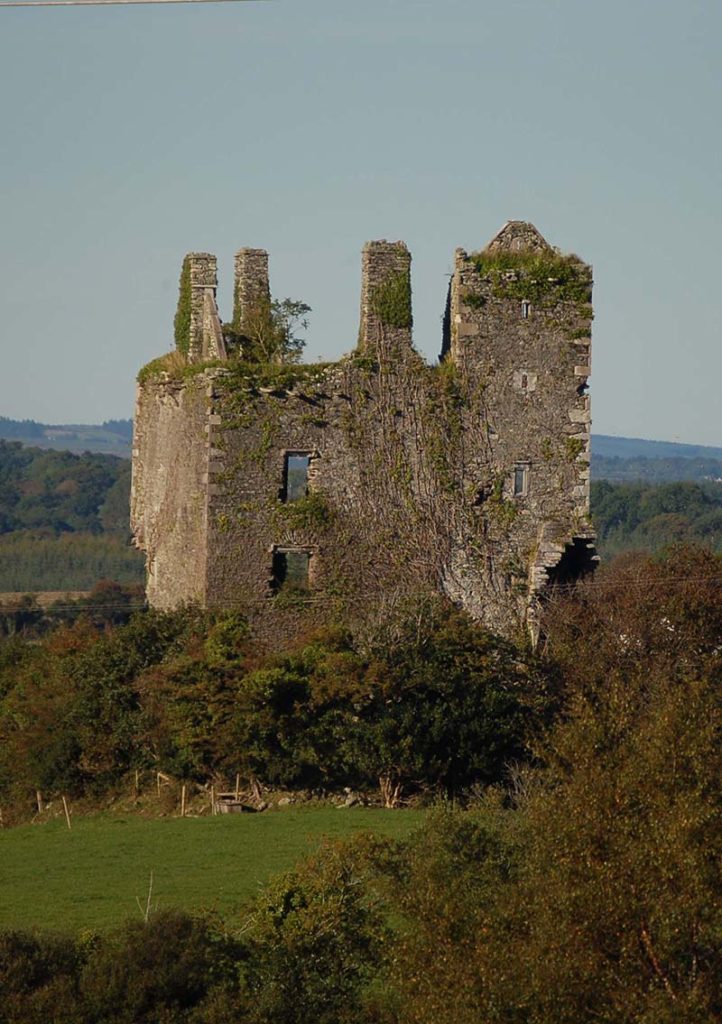
In O’Donovan’s Ordnance Survey Letters, a lengthy discourse on the parish of Prior articulates on no less than three castles, the ‘Little Castle’, Fermoyle Castle (of the family ‘Formoyl’) and the ‘sea’ or ‘Segerson’ Castle:
Situated on the extremity of a narrow ridge of land running a considerable distance north eastwards into the bay is a castle in ruins about 1/4 mile to the north east of the abbey … The length from east to west is 33 feet 4 inches outside and from north to south 25 feet 8 inches same side. The present height 18 feet 5 inches taken at highest point of the south wall.13
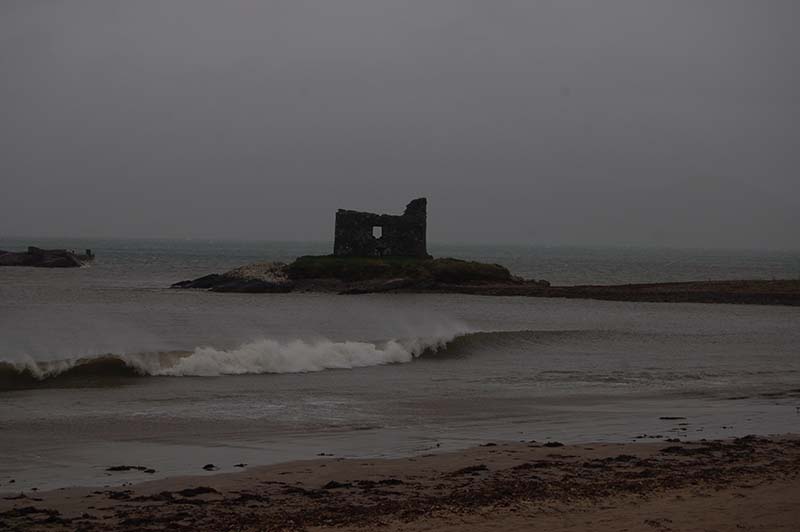
The ‘Castle of Formoyl’ was built and the ‘Castle of Ballycarna’ (Ballycarnahan) begun ‘a little before Cromwell’s time’, the latter of which –understandably – was not finished.14
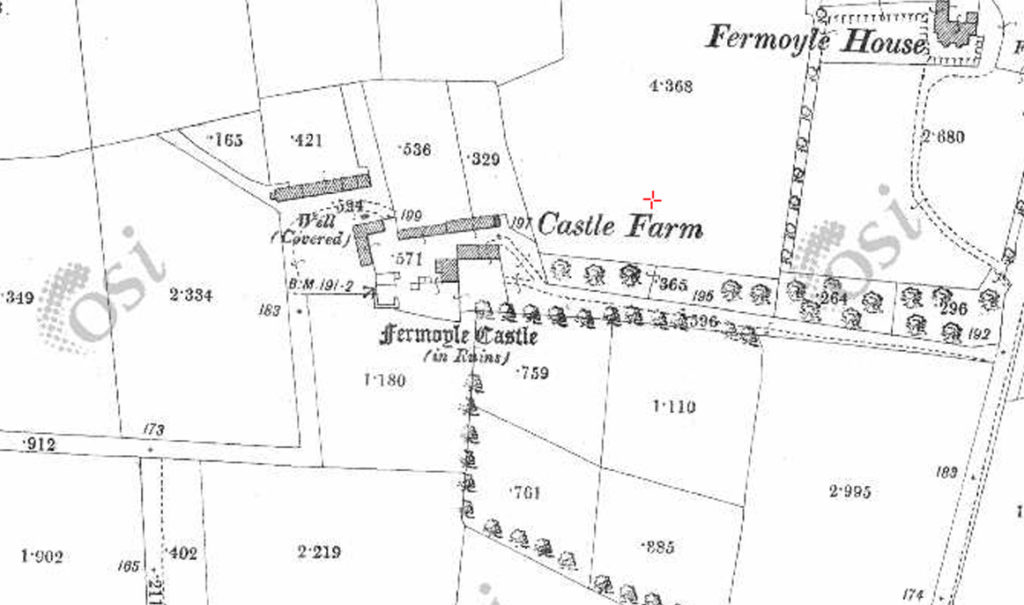
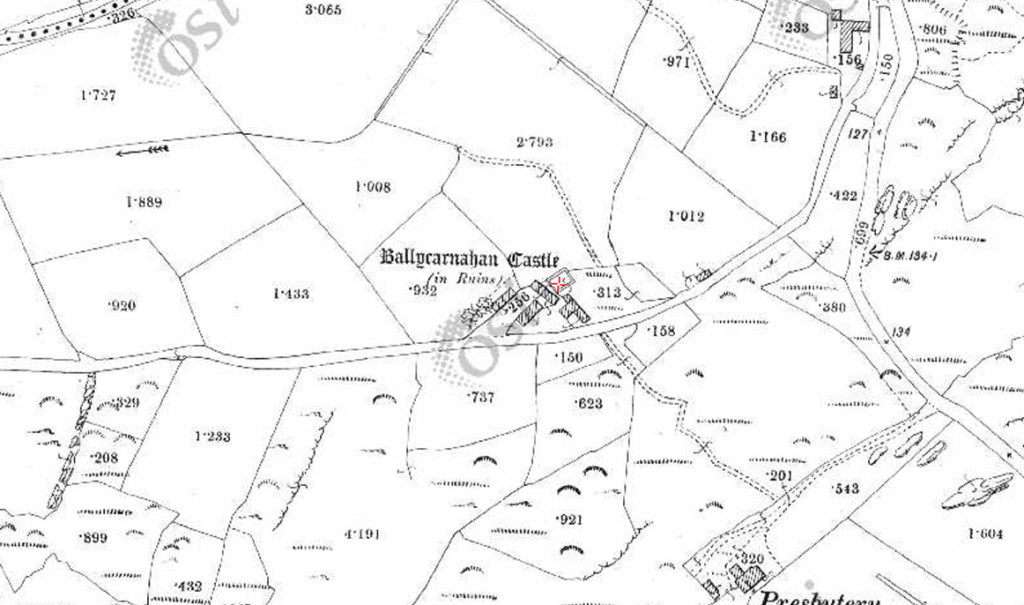
In 1650, a High Sheriff of Kerry, son of Lord Roche, raised a body of 700 men in Kerry. In April that year Lord Broghill found Carrigadrohid Castle in Cork garrisoned by some of Roche’s troops.
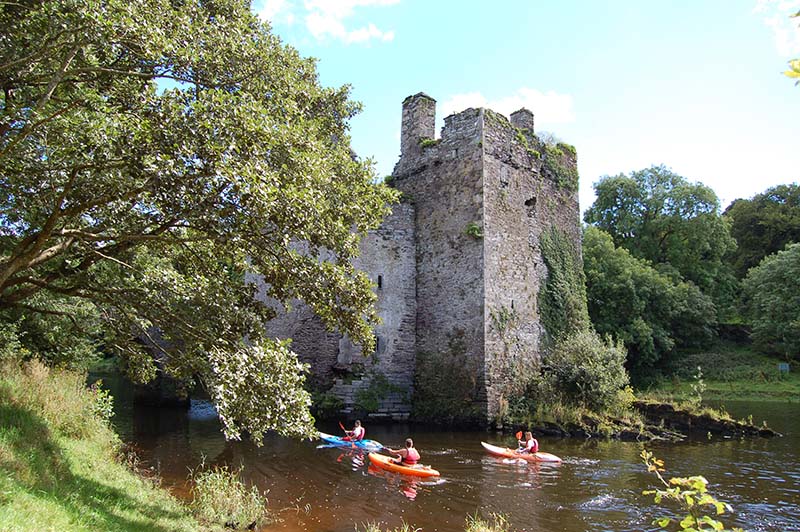
Broghill continued to Macroom (about three miles distant) where battle ensued and hundreds were slain. Roche was taken prisoner along with Boetius Egan, the newly consecrated Bishop of Ross, who had been taking refuge ‘in the fastnesses of Kerry’.
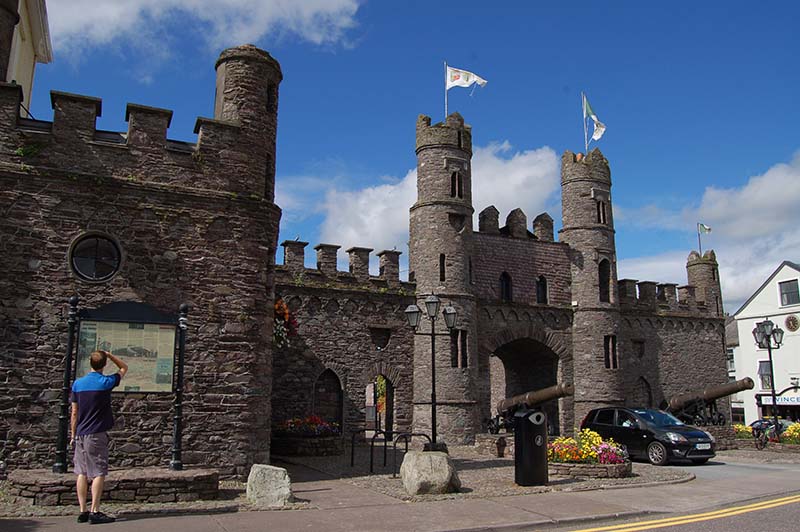
The Bishop of Ross was taken to Carrigadrohid Castle and offered pardon if he could make the garrison surrender.
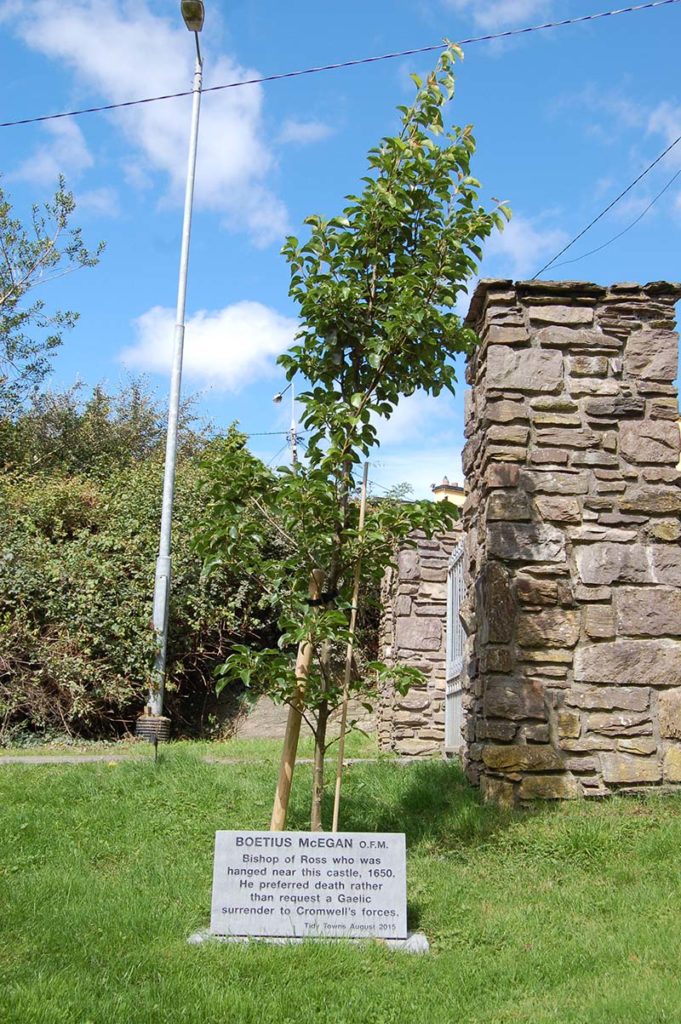
Roche, whose ancestors were the Earls of Desmond, was condemned to be shot. His fate is not known.15
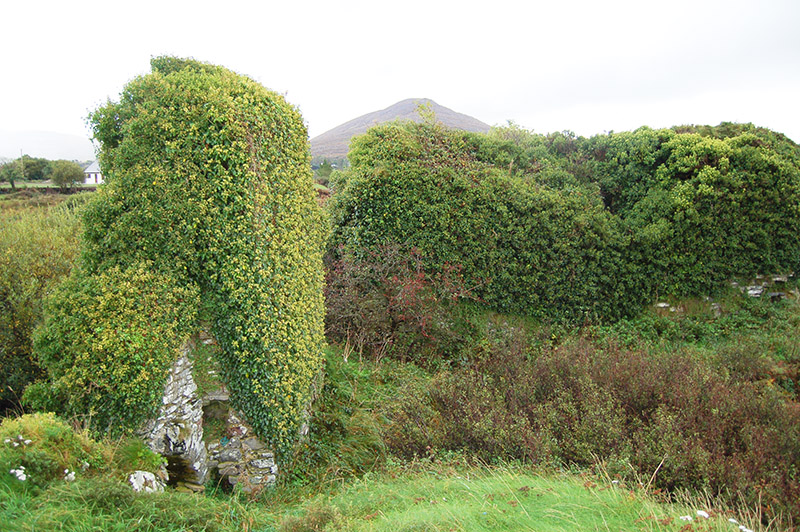
__________________
1 Tralee Chronicle, 4 April 1846. The famine intervened and O'Flaherty abandoned his project. In 1853, it was observed that O'Flaherty's valuable papers had 'either been scattered to the winds or remain in the hands of parties who think they will enhance the value of the manuscripts by hiding them under a bushel' ('Notes on the Round Towers of the County of Kerry' by Richard Hitchcock, Transactions of the Kilkenny Archaeological Society, Vol 2, No 2 (1853) pp242-254. Note on John Thomas O'Flaherty in Memories of Old Tralee by Miss A M Rowan.
2 Rev Henry Biles' Discourse on the Spirit of Irish History; or the causes of Irish distress examined and some of its remedies indicated (Cork Examiner, 26 April 1847). Biles added, 'Cromwell's track in Ireland may be followed over ruins which yet seem fresh. We can trace him as we do a ravenous animal by the blotches where he lay to rest or by the bloody fragments where he tore his prey ... To speak of Cromwell in relation to Ireland he was a steel-hearted exterminator ... To constitute his character will probably be decided in opposite directions by opposite parties to the end of history ...'.
3 'The Castles of Corkaguiny, County of Kerry, No 1' by Richard Hitchcock, Proceedings and Transactions of the Kilkenny and South-East of Ireland Archaeological Society, Vol 3, No 2 (1855), pp345-356.
4 'Near the shore of Dingle Bay stands the ruins of Minard Castle which is said to have been built by one of the Knights of Kerry of Dingle Grove. Walter Hussey of Castlegregory, having fought against Cromwell's forces at Castlegregory, escaped in the night with all his men and got into Minard Castle ... Hussey and his men were blown up by powder laid under the vaults of the castle. Hussey was recognised amongst those killed by a red stocking which he wore as a sign of distinction' (County Kerry, Corkaguiney, 'Minard' by Patrick M Foley, Kerryman, 24 July 1926).
5 Elsewhere he added, 'The Annals of Innisfallen state that the castles of Dunkerron, Dun-na-mbaro, Cappanacushy and Ardtuillighe were built by Carew, nephew and heir of Raymond le Gros in 1215. Lixnaw castle was probably built by this Carew also, as stated by Sir George Carew in 1600. When the Normans were defeated at Callan in 1261, the Irish tribes won back Dunkerron, Cappanacushy and Ross castles, and almost all Kerry (King's History, Vol 1, note 63, Castles of Kerry).
5a‘I regret to say that last winter the whole south-west angle and most of the vaulted roof of Browne’s Castle collapsed into the fosse, as well as parts of the northern end. The castle is rapidly vanishing. It was nearly perfect in 1841. Miss Hickson, in 1880, saw the porch and ‘murder hole’ and much of the side walls across the headland, but a chiselled arch in the story above the porch and the corner turrets had fallen. On my visit in 1908 the porch had been destroyed, but some of the cross-wall remained; the latter was removed, and the very foundations dug out by the time of my second visit in 1909; still the external view of the tower was fairly complete, though I anticipated its collapse. I am told that it fell on a stormy day in one piece. The broken vault and shattered remains of the eastern wall must soon follow, and how long the seaward side may stand (built as it is of rounded beach stones and bad mortar) who can say? There have also been falls of the drift, affecting the remains on the headland at it and at the ‘Stack Fort’ at Ballybunnian’ (Notes on the Promontory Forts and Similar Structures of County Kerry by Thomas Johnson Westropp, Part V, Iveragh (Valencia to St Finan’s Bay) (Continued) The Journal of the Royal Society of Antiquaries of Ireland, Sixth Series, Vol 2, No 4 (Dec 31 1912), p316).
6 Father 'Sullivan's baptismal name was Dermott, which was changed to Francis when he entered religion. He was born about the beginning of the 17th century and proceeded to Spain where he entered the Franciscan Noviciate. In 1630 he returned to Ireland, the principal scene of his labours was Kerry. He was guardian of Ardfert for several years and when Geoffrey O'Daly, Bishop of Kerry opened a college at Tralee he was among the professors of theology. In the rising of 1641 he went to Spain where he was successful in pleading the cause of the country later returning to Ireland by 1645. In June 1653 a company of Cromwellian troops under the command of Colonel Nelson defiled through the mountain passes of West Kerry ... he took refuge in Scariff, an island to the north of the Kenmare river ... On the eve of the feast of Baptist a troop of Nelson's soldiers landed on the island. Father O'Sullivan had concealed himself in a cave on the shore. They quickly discovered his hiding place ... a wretch sprang forward and cut off the upper portion of his skull with one blow of his sword. Thus died the martyr of Christ on June 23rd 1653 ... His body was laid at rest in the little graveyard on the eastern side of the island ... Scarriff came into possession of the O'Connells of Darrynane. One of the family removed the upper portion of the skull to their residence where it was religiously venerated as the relic of a martry for several generations (Kerry Weekly Reporter, 13 August 1898).
7 'The remains of his house in Begnish Island can still be seen' (Irish Examiner, 25 July 1896).
8'One of the O'Connors entered the Austrian Service where he attained to a distinguished position. The other brother preferred the life of an outlaw on his native hills' (Kerryman, 22 June 1907).
9 Piaras Ferriter is said also to have had a castle on the Great Blasket (Irish Examiner, 1 December 1934, 'Historic Peninsula' by M P Morris).
10 The Story of Kerry (1935) by Pádraig Pléimionn (Patrick J Fleming), pp64 & 65. Ferriter numbers (p58) on a list of the principal Kerry families in 1641 in same source (the author also describes how Ross Castle was made the base for military operations in Kerry, and parties of soldiers 'went out daily to demolish churches and castles whose ruins we see at the present day scattered over the face of the county'). Jeremiah King, in Vol I of his History, wrote, 'Father Maurice O'Connell, a Jesuit, who in the guise of a labourer, gave Ferriter the Last Sacraments.'
11 Kerryman, 25 May 1929. Statement made at a public meeting in the East Avenue Hall on 19 May 1929 when an organising committee undertook to erect a memorial on Martyr's Hill. A mural tablet was also unveiled at Muckross Abbey on 15 August 1940. The four poets were Piaras Feirteir, Aodhgan O Rathaille, Seafradh O'Donoghue, Eoghan Ruadh O Sullivan.
12 The Poems of Geoffrey O'Donoghue Dánta Shéafraidh Uí Dhonnchadha an Ghleanna with Ireland's War Poets 1641-1653 (2008) by John Minahane, published by the Aubane Historical Society.
13 John O'Donovan's Ordnance Survey Letters, Parish of Prior, pp138-171/pp384-417. 'The ruins of a large house formerly occupied by a man named Segerson are still seen here. There are also the ruins of his tenants' houses'. 'A branch of the Sigerson family migrated to a distant promontory of Kerry and settled harmoniously among the people. The ruins of the castle are standing today at Ballinskelligs' (Saturday Herald, 1 March 1913).
14 Ibid. 'In an account of Kerry written about the year 1750, preserved in the library of the Royal Irish Academy in the O'Gorman Collection we find in the enumeration of the families that had estates out of O'Sullivan More's house in the county of Desmond the family of Formoyl and Ballycarna, mentioned the 8th in number of these families. The words are: '8thly the family of Formoyl and Ballycarna likewise ref'd to said records (O'Sullivan More's) what other denominations they had besides the four plowlands of said Formoyl and the four plowlands of said Ballycarna. They built the Castle of Formoyl and began the Castle of Ballycarna a little before Cromwell's time which they did not finish, they were a family of good note for generosity, manhood and education. Of the family of Formoyl was the courageous captain Owen O'Sullivan who was wounded and disabled in the skirmish of Ballinskellig (for this skirmish see MS p93 and see Smith's History p104) of which there will be a further account given in the following discourse, speaking of Cromwell's wars, Daniel Garane O'Sullivan of the branch of Ballycarna, an officer of good note in said wars, and afterwards in France and for learning and poetry. (NB: Ballycarna is now Ballycarney townland in the parish of Kilcrohane).'
15 Cromwell in Ireland: A History of Cromwell's Irish Campaign (1883) by Rev Denis Murphy, S J, Dublin, 'The Battle of Macroom', Ch XXVII, pp320-326 ('The object of this work is to give an account in full detail, as far as is possible, of Cromwell's Irish campaign, which began in August, 1649, and ended in May, 1650'). It is not clear if Roche was indeed shot; later in the account of events at Macroom, Rev Murphy writes, 'Roche's men had meanwhile fled into the woods; he tried to rally them about Killarney and sent to Inchiquin for a reinforcement of horse from Clare, in order to make a second attempt to relieve Clonmel. But Broghill advancing to Drishane near Millstreet, prevented their uniting.'
David Roche, High Sheriff of Kerry in 1650, son of Lord Roche. In King James's Irish Army List 1689 (1855) by John D'Alton Esq, p80, it is observed that 'Amongst the Confederate Catholics at Kilkenny in 1646 sat Maurice Roche, Viscount Fermoy; David Roche of Glanaure (?Glanogher), John Roche of Castletown and Redmond Roche of Cahirdowgan in the Commons'.
Maurice, 8th Viscount Fermoy (c1595-c1670), son of David, 7th Viscount Fermoy (c1573-1635). Maurice's brothers were named as John, Sir Theobald, Ulick and Redmond. David, High Sheriff of Kerry, would seem to belong to this family. Maurice, 6th Viscount Fermoy, who died at Glanogher in 1600, had married two daughters of two Earls of Desmond, viz, Ellenor, daughter of John, 14th Earl of Desmond and Catherine, third daughter of Gerald, 16th Earl of Desmond.


